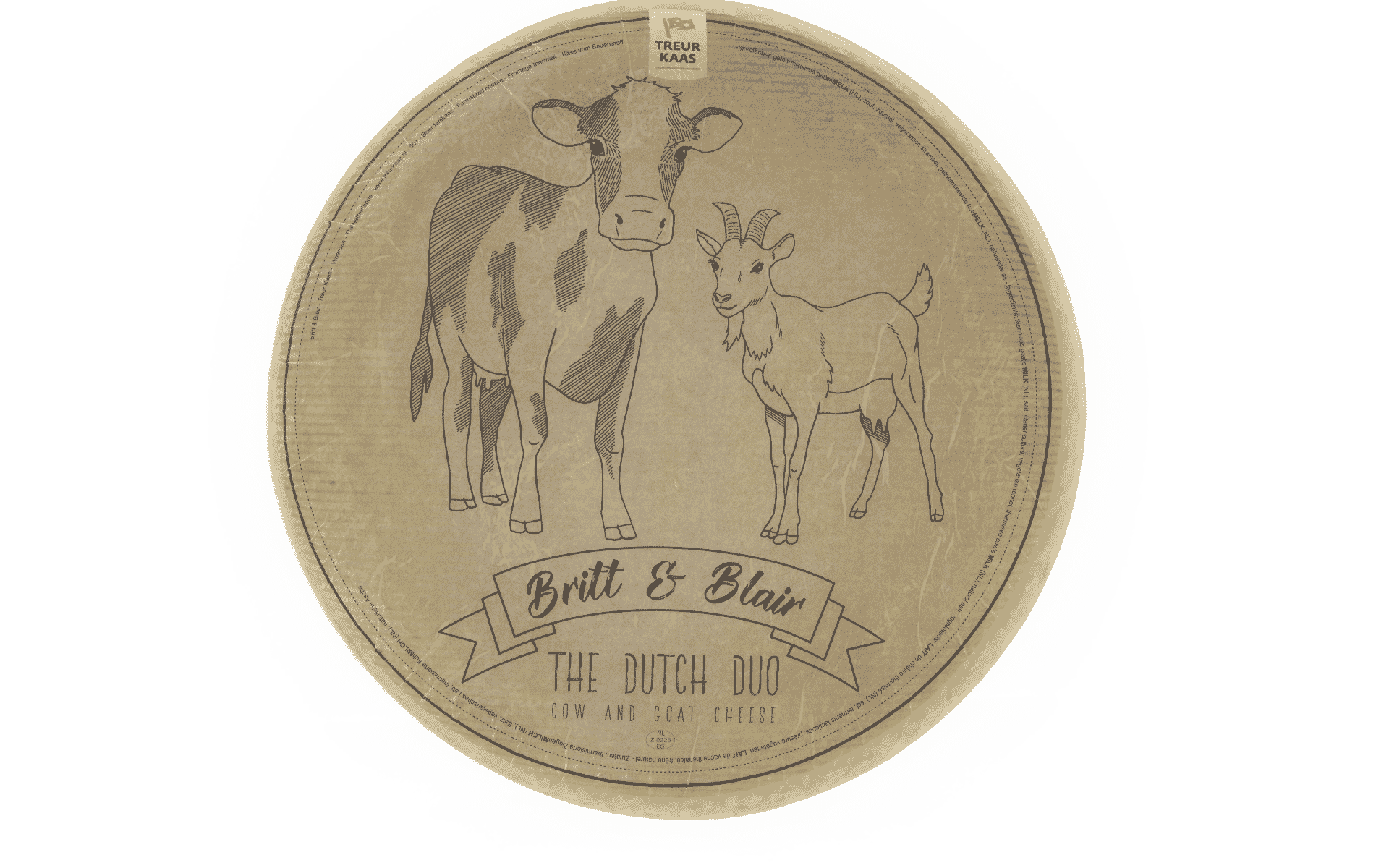Cheese Profile:
This week’s selection is a lot of fun: Double Dutch, known internationally as “Britt & Blair”. I’d guess this is a cheese you haven’t run into before! This is our second selection from one of my favorite Dutch producers, Treur Kaas. Treur’s a Dutch affineur (“cheese ager”) dedicated to selecting, aging, and exporting small-production goudas from great makers around the Netherlands. I’ve long loved these Goudas as true stand-outs in a crowded category. Their caves and rigorous selection process produce moist, aromatic, pretty cheeses vs. the dried out, one-note bombs you often find.
Double Dutch might remind you of a very unrelated cheese at first glance, Morbier, because of a dramatic ash line jutting through its equator. In Double Dutch’s case, this line is made of burnt grape leaves. Traditionally, ash was used as rudimentary pest control, but in the case here, it’s just cute. The main event: the top portion is cow’s milk and the bottom portion is goat’s milk. Mixed milk cheeses are very common around the world–can’t name another example like this though where the milk types are physically separated!
I love how this cheese invites you to sit with the essential properties of these milks. Double Dutch’s age is approximately 3 months, maintaining the youth and freshness of the milk. You’ll get fruitiness from the goat’s milk and more buttery, caramel notes from the cow’s milk. Wondering why the two different colors? Beta carotene! Cows store beta carotene whereas goats convert it into colorless Vitamin A.
This is such a great cheese for a late summer outdoor meal or picnic. You’ll find recommendations for red wine pairings with Gouda, but I prefer those for cheese with more age. For Double Dutch, I’d go with a solid lager or another lighter, toasty beer. We have some delicious apples and pears coming into the store that would make a great addition. Take a photo of this stunner? Be sure to tag us @eatharvie! We’d love to see your spread!
Fun Fact:
There’s a common myth that France’s Epoisses was so stinky that it was banned on the French metro. There’s no truth to this, but I can attest to hauling a cheese so stinky that it cleared half a subway car in New York City! What makes certain cheeses stink? A bacteria called Brevibacterium linens (or B. linens). B. linens causes that orange-red hue on a washed rind cheese’s rind, breaks down proteins leading to a wonderfully soft-to-oozy texture, and packs a majorly smelly punch!

